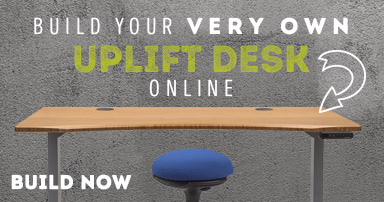Get Connected Wire-Free!
Posted by Tyler R on May 23rd 2016
That thing that just knocked over your coffee mug while you were mousing around at your computer? That’s a wire. A lot of outdated mice have them, and, in 1992, they were kind of necessary. However, through some technological sorcery, we as a species have found a few ways to make wires disappear. In fact, after you clean up that coffee, you may want to have a gander at some of our wireless mouse options here at HS. “But how does the magic of the wireless mouse work?” you may be asking. Well, at the risk of spoiling your inner child’s sense of wonder, I’ll be happy to explain.
Wireless mice typically work one of two ways. Either the mouse connects via Infrared, or it uses Bluetooth. I’ll spare you the science, because this is meant to be a helpful run down and not an afternoon in a CIS class, but, the basic difference is Infrared is a signal that’s great for short distances as long as there is no obstruction between the device and the receiver. It’s not a signal that’s great at going through things. Think television remote, because it’s pretty much the same thing. Bluetooth has a longer range and doesn’t have to be in direct site of the receiver, so if your desk has a ridiculous amount of knick-knacks, this may be the one to go with.
Now, assuming you’ve acquired your new wireless mouse within the time it took to make it to this paragraph, I’ll explain how they interact with your computer - starting with Infrared. Infrared, the vast majority of the time, has a receiver that comes with the mouse. The reason being that most Infrared only works between two devices that were intended to work with each other. There are exceptions, but they’re not important. So, when pairing your Infrared mouse with your computer, you’ll want to follow these steps:
- Put batteries in your mouse. The battery compartment is more than likely on the bottom of the mouse. This is super important - don’t skip this one.
- Turn the mouse on. There's usually a little flip switch on the bottom. This step is also very important.
- Plug the receiver into an open USB Port. If you don’t know what a USB Port looks like, it's the slot with a symbol above it that looks like a warped trident, or a really sad Charlie Brown version of a tree.
Now, one of two things will happen at this point. If your mouse is “plug and play,” the mouse should be good to go at this point. Try it out. If your mouse has special software that has to load, it’ll do it automatically, or a box will pop up that walks you through the setup process step by step. Just read what it says. Once you get the little message that basically says you’re good to go, try out your mouse. If you need to adjust the sensitivity, you can either do that in the computer’s settings, or sometimes the mouse’ own software will let you make adjustments as well.
If you’ve opted for a Bluetooth mouse you’ll want to follow these steps:
- Put a battery in your mouse. I cannot stress enough the importance of putting batteries in your battery-operated devices.
- Turn the mouse on.
- Plug the receiver into an open USB Port if you have one. Typically, these will install themselves. If you have a Mac or a computer with built-in Bluetooth capabilities, this step can go the way of what you had for breakfast three weeks ago. Forget about it.
- Enable Bluetooth on your computer. For PCs with Bluetooth capability, click start and type “add device” in the little search bar. There should then be an option in the results that says either “add a device” or “add a Bluetooth device”. You’ll want to click that and follow the prompts. You may also need to do this if you have a version with a receiver. It depends on the mouse brand.
- FOR MAC USERS - Open up "System Preferences." If you have a hard time locating it, you can search for it with Finder. Under System Preferences is an icon titled, conveniently enough, “Bluetooth." Click that and switch it to “on."
- In both instances, your mouse should appear in the devices panel. Click the mouse’s name to pair it with your computer
- Adjust your settings, either using the computer’s settings menu or the software that your mouse came with.
Now I know some people are very visual learners, which is why I scoured YouTube for some videos to demonstrate these steps. If you’re on a PC, you’ll want the video found here. If you’re a Mac, you’ll want to check out this video. If you’re on neither of those things, then I hope this was at least a good read. If your ergonomic interest goes beyond mice, we carry a lot of other products as well that can be viewed here. Happy mousing!




